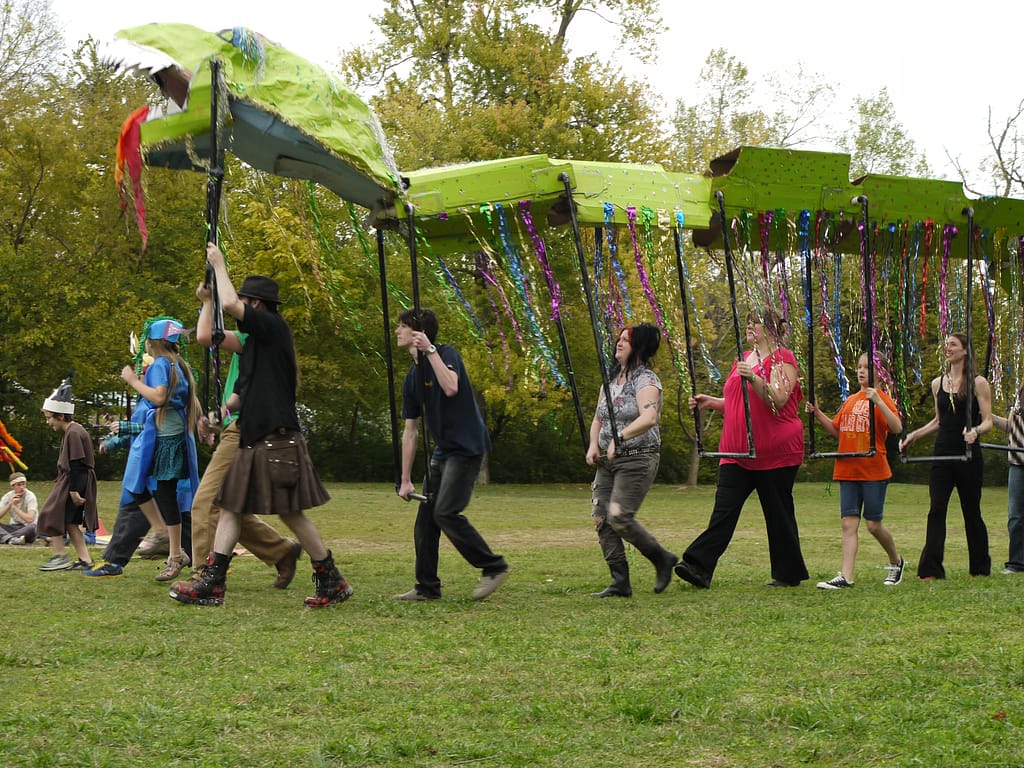
By Addie Jones
In the heart of Fayetteville is a warm, tranquil escape from the business of life and the bustling town streets. Founded by Jo Ann Kaminsky, The Art Experience provides art therapy and creative experiences in a safe, growth-oriented environment containing anything from colored pencils to giant handmade puppets.
Kaminsky started out as an artist and art teacher, receiving a certification in counseling and further training in Dallas at the North Texas Art Therapy Institute. In the early 1990s, she started a practice where the University of Arkansas School of Art is currently located.
“When I first started,” Kaminsky said, “I did work with an agency, but I really wanted to work in the community. I was working with some kids who had really struggled with their ability to succeed in school and had very low-self esteem and realized that they were the perfect folks for art therapy.”
Kaminsky now works as a full-time art and play therapist, persuading skeptical clients to draw, paint, journal or soak strips of paper in paste to create. The Art Experience empowers individuals and groups while encouraging community and developing the creative impulse.
The therapist works with people of all ages. She primarily emphasizes play therapy with younger children, providing them guidance in a room full of toys. With older visitors, she leads them to a room with an assortment of art materials.
“We’re using it to calm ourselves,” Kaminsky said, “sometimes gather memories and sometimes really come up with solutions, maybe imagining something being in a different way.”
Robert Davis, a professor of public health at the University of Arkansas, said expressive therapies entail a multitude of activities — art, music, dance, journaling — and can be used as therapy or as a psychotherapy technique. They are often used to express emotion, providing a medium for patients to project feelings and add meaning to a topic.

In the context of art psychotherapy, a client might receive a prompt and a medium: clay, paint, colored pencil and paper. They would then express themselves through the material they were given, allowing them to open the door for further acknowledgment, discussion and remediation.
“Art is interactive,” Davis said. “Think about looking at a great painting. You don’t just see it, you feel it. It visually, auditorily and interactively brings people into contact with their emotions and the causality of those feelings.”
Lauren Levine, a licensed professional counselor/supervisor and registered expressive art therapist at Create Change Counseling, furthers these ideals through her work. Levine’s mission is rooted in the belief that there is an innate and powerful sense of creativity within each of us waiting to be unlocked, she said.
“I work to bridge the gap between the undercurrent of emotions and conscious awareness,” Levine said. “I strive to provide an environment which encourages clients to explore hidden feelings, build resilience and uncover a deeper kind of inner strength which they can use to meet their daily challenges.”
Levine purely treats individuals over the age of 18, mostly addressing anxiety, situational depression and attachment wounds. Her approach is, ‘just because I don’t know the answer doesn’t mean there isn’t one.’
With this approach, one can learn to creatively explore all the potential routes to change without being forced, she said.
“I approach growth and healing from a place of creativity and imagination,” Levine said. “Even if there is no ‘art activity’ happening in the session, I view growth and healing as a creative process. We can learn to sit in the discomfort of (it) as answers reveal itself.”

Kaminsky also hopes to use art therapy to help people calm themselves, gather memories and create solutions. She uses her mediums to help people develop coping skills, making sure the art is driven by the individual and their needs.
Play therapy tools include a sand tribe, 3D collage, paper mache and “masks of emotions.” In this room, children are essentially allowed to create or perform anything they desire.
Part of Kaminsky’s treatment is understanding the developmental level of the person she is working with. Though adults have more freedom regarding making changes in their lives, they also have misconceptions that they cannot do art. This mental block affects them more than it does with younger kids, Kaminsky said, so she works to encourage them and be a cheerleader for them to loosen up and explore.
In addition to individual therapy, The Art Experience hosts classes, partners with outside institutions for workshops and conducts events such as puppet parades. Kaminsky also provides a space for group therapy, with topics including circles of healing and memory keepers. Looking forward, the practice is working to continue classes and produce a puppet parade on May 3 to continue being a therapeutic center for community members.
“There is no right or wrong way to do art therapy,” Kaminsky said, “so when people are there, I encourage them to think about it in a different way.”